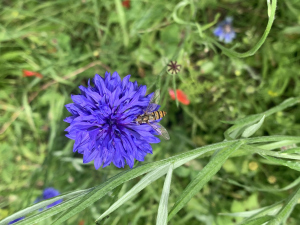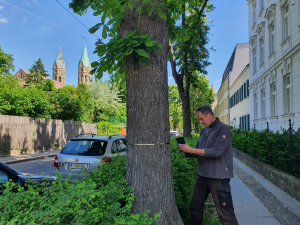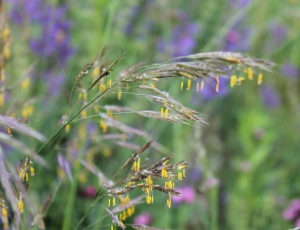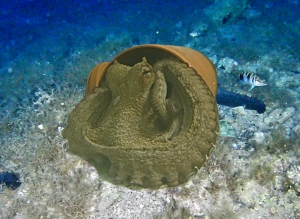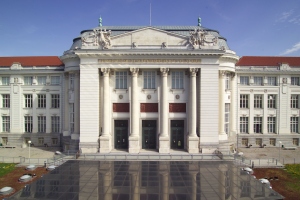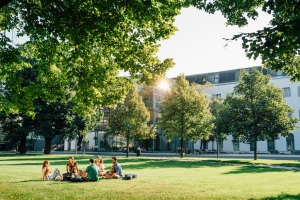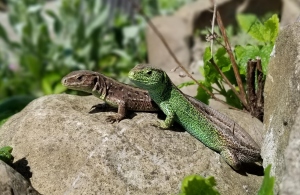
Florian Heigl
ACCESS
Smart Movement Analysis for Knee Osteoarthritis
ACCESS investigates how knee osteoarthritis affects movement — directly in physiotherapy practices using modern 3D movement-analysis technology. Patients and physiotherapists collaborate with researchers to gain new insights for better treatment.
What are the aims of the project?
ACCESS investigates how knee osteoarthritis affects everyday movement. The goal is to capture movement patterns of patients using innovative 3D motion analysis — directly in physiotherapy practices. Together with physiotherapists, both movement data and information on pain, function, and quality of life are collected. This leads to new scientific insights into how osteoarthritis affects mobility and how therapies can be better tailored. By participating, citizens contribute valuable data to research while gaining insights into modern movement technology and their own health.
How can you participate in research?
You can join ACCESS either as a physiotherapist or as a patient with knee osteoarthritis. Physiotherapists collect movement data using two smartphone cameras to analyze functional tests (Walking, Sit-to-Stand, stair climbing) and health information. Patients voluntarily take part in the 3D motion analysis and complete questionnaires on pain, function, and quality of life. Both groups receive clear instructions and are actively involved in the research — hands-on, anonymous, and directly integrated into everyday therapy.


Amphibiom CS Award
Maria Krall from the #citizenscience project AmphiBiom shows in a detailed blog post, peppered with photos, how active the project is as part of the Citizen Science Award 2025.
Young Citizen Science PolliDiversity
In the PolliDiversity project, students explore flowering areas and observe pollinating insects like wild bees. Using digital tools, they collect scientific data and learn how to protect and experience biodiversity.
What are the aims of the project?
In the PolliDiversity project, students investigate the development of flowering areas using the ReNatura® BW3 Gumpenstein wildflower mixture, observe wild bees and other pollinators, and collect scientific data using digital tools. The goal is to raise young people's awareness of the importance of biodiversity and actively involve them in scientific research. The project is accompanied by a biology education study conducted by the Paris Lodron University of Salzburg, which examines how students’ well-being, emotions, environmental awareness, ecological understanding, species knowledge, and connection to nature change through participation. Additionally, the impact of mindfulness is being explored in a comparison group.
How can you participate in research?
Interested schools can register as project partners and participate with their classes. Students create flowering areas, observe pollinators, and document their findings using digital tools and standardized protocols. They are supported by teaching materials, explainer videos, and booklets. Individuals can also engage by accessing the project’s digital platforms, sharing experiences, and supporting the initiative. All relevant information on how to participate is available on the project website and in the project brochure.
-
 Students planting the flowering area Students planting the flowering area
Students planting the flowering area Students planting the flowering area -
 Students identifying the plants Students identifying the plants
Students identifying the plants Students identifying the plants -
 red mason bee (Osmia bicornis) red mason bee (Osmia bicornis)
red mason bee (Osmia bicornis) red mason bee (Osmia bicornis)
https://www.citizen-science.at/en/network/working-groups/wg-strategy/author/934-florianheigl?start=10#sigProId5b5de21b2a

city-tree-soil
In the City-Tree-Soil project, the Federal Research Centre for Forestry (BFW), the Federal Environment Agency (UBA), the University of Natural Resources and Life Sciences (BOKU) and the University of Innsbruck are investigating the growth conditions of urban trees in Vienna and Innsbruck. Citizen scientists (schools and the general public) are responsible for recording the growth in thickness. In addition, soil carbon is being measured in both cities.
What are the aims of the project?
The project aims to answer three research questions.
- Quantification of the impact of urban tree stands on the growth, carbon storage, water storage and infiltration capacity of urban soils.
- Contributions to determining the carbon balance for the urban areas of Vienna and Innsbruck.
- Communicating the importance of urban trees for humans and the microclimate, and the necessary functions of the soil for this purpose, to society.
How can you participate in research?
Schools and the general public are encouraged to measure the growth of specially selected trees as often and regularly as possible. This is done by reading a value on a scale (dentrometer) attached to the tree. The value is entered into a form on a smartphone using a QR code and sent. No personal data is collected.
Biodiverciti
What role can you play in the biodiversity and climate crisis - in the familiar surroundings of your own garden? Citizen scientists implement biodiversity-enhancing measures in their garden, observe animals and plants and are analyzed how their attitudes and behaviors change.
What are the aims of the project?
BIODIVERCITI pursues two core research questions to analyze the impact of its intervention on Citizen Scientists and their gardens: 1. What improvements can be achieved in indicator species? BIODIVERCITI analyzes the effectiveness of adapted gardening and cultivation practices to increase biodiversity. 2. How do individual climate action and efficacy beliefs change? By transforming their own gardens, citizen scientists can develop a sense of control, even if they feel overwhelmed in the face of global crises. In contrast, experiencing personal limitations in achieving quick ecosystem improvements or feeling that they have “already done their part” can undermine subsequent climate action efforts.
How can you participate in research?
Citizen Scientists can participate in BIODIVERCITI by...
- implementing biodiversity-enhancing measures in their own garden
- observing and reporting selected indicator species
- actively exchanging information on implementation and observations with other citizen scientists and the project team
- taking part in seminars and network meetings for improving their personal knowledge and for discussing project results
- taking part in surveys on attitudes and behavior

Talk: Panties
On 7 May at 2 pm, the third lecture of the summer semester 2025 of our Citizen Science Seminar will take place at BOKU University (in German). This one is about the project ‘Beweisstück Unterhose’. We are very pleased to have Franz Bender from Agroscope as a guest in the seminar.
If you are interested in this lecture and would like to join us online via Zoom, please register using the registration form.
Octopus Intelligence
Do you love diving or snorkeling? Then become part of marine research! Octopus Intelligence invites you to observe wild octopuses in the Northern Adriatic Sea and document your sightings. Every observation helps to learn more about these fascinating animals and their habitat.
What are the aims of the project?
The citizen science project Octopus Intelligence studies octopuses in the Northern Adriatic. The goal: to find out where octopuses occur, at what depths they live, how large the populations are, and how these animals behave in the wild. Octopuses are considered intelligent, adaptable, and popular – yet their behavior and distribution are still poorly understood. The project collects sightings from divers and snorkelers to expand this knowledge. The data helps to better understand octopuses and their habitats – a crucial foundation for their protection. At the same time, the project raises awareness for respectful interaction with the marine environment and its inhabitants and supports initiatives such as marine protected areas. Encountering an octopus is a highlight for many underwater enthusiasts – and through this project, it also becomes a valuable scientific contribution.
How can you participate in research?
It’s easy to participate: while diving or snorkeling in the Northern Adriatic, observe an octopus. Take photos or videos of the sighting. Document the location as precisely as possible – ideally with GPS coordinates, a map marking, or a detailed description. Send your observations to the project team via email or social media. You’ll find detailed instructions and examples on the project website. Respect for the marine environment is very important to us: please avoid touching wildlife, using flashlights, or causing unnecessary stress. The goal is to document the animals’ behavior in their natural habitat with as little interference as possible. Feedback, questions, and your own ideas are always welcome.
Pictures
-
 CC BY 4.0 Daniel Kalysch CC BY 4.0 Daniel Kalysch
CC BY 4.0 Daniel Kalysch CC BY 4.0 Daniel Kalysch -
 CC BY 4.0 Selina Ernst CC BY 4.0 Selina Ernst
CC BY 4.0 Selina Ernst CC BY 4.0 Selina Ernst -
 CC BY 4.0 Selina Ernst CC BY 4.0 Selina Ernst
CC BY 4.0 Selina Ernst CC BY 4.0 Selina Ernst
https://www.citizen-science.at/en/network/working-groups/wg-strategy/author/934-florianheigl?start=10#sigProId73dd95bc0b

Vienna Museum of Technology
Here technology becomes an experience2 . Technology and science are key drivers of our society. They are all around us and determine our daily lives. Our cultural mission is to publicly reflect upon the developments of technology and science and their contemporary effects on society. The integrative combination of original objects with interactive elements is our trademark.
The Technical Museum has entered the field of citizen science with the Sparkling Science project This is (not) Rocket Science!. A project in which work is carried out internally across departments and external relationships with school locations in the museum's neighborhood have been strengthened.
mdw - University of Music and Performing Arts Vienna
The mdw - University of Music and Performing Arts Vienna is one of the world's largest and most renowned universities for the performing arts of music, theater and film. It educates around 3,000 students from 70 countries and offers 115 fields of study and 41 university courses in 25 institutes.
Scientific and artistic research takes place at a number of institutes and research centers and encompasses a variety of disciplines and research fields in the humanities, cultural, social and natural sciences, which are always in interaction with the development and development of the arts (EEK).
The socio-political dimensions of art and culture, the questioning of power structures, the identity-forming effect of music, health promotion in the field of applied research, for example on music physiology and music therapy, are examples of citizen science that is being promoted at the mdw.
Recognizing the potential of non-academic knowledge for research, the mdw promotes innovative, multidirectional and dialogical transfer activities in the form of cooperation with various social actors, interdisciplinary Art & Science projects and the involvement of different target groups. Citizen science is used, for example, in ethnomusicological or music sociological research. The Department of Music Education/Community Music represents a new focus within music education research and practice, enabling students to develop innovative participatory art formats and to critically examine music and society.
BIOM-Garten
Monitoring of Amphibians and Reptiles in Austrian Gardens
The BIOM-Garten project invites people of all ages to look out for amphibians and reptiles in their gardens and report their observations. This will help to fill gaps in existing monitoring and implement better conservation measures for these endangered animals.
What are the aims of the project?
Amphibians and reptiles are among the most endangered animals in the world. In Austria, more than half of the 21 amphibian and 15 reptile species are classified as endangered, critically endangered or already threatened with extinction. The aim of the project is to fill the gaps in the existing monitoring of amphibians and reptiles with the help of citizens and to shed more light on private gardens as habitats for endangered species. In addition, citizens can describe their gardens to characterise environmental parameters, and remote sensing methods will be used to complement species monitoring. This is the first time that the contribution of gardens to habitat connectivity is analysed specifically for aquatic and semi-aquatic animal groups. The garden descriptions will also help to identify structures that are most favourable for particular species.
How can you take part in the research?
Monitoring made easy! Use your favourite app. The website artenzählen.at, which has been specially designed for amphibian and reptile monitoring, allows you to create species reports and garden descriptions in just a few clicks. Photos of all native species and intuitive input options make reporting easy. If you are already reporting frogs, lizards etc. on Naturbeobachtung.at, iNaturalist or Herpetofauna.at, you can continue to do so, as observations from these platforms will also be included in the overall results of the BIOM-Garten project. However, it is important that you mention 'BIOM-Garten' in the comment field so that the sightings can be correctly categorised. And please do not forget the garden description on artenzählen.at.
Picture gallery
-
 Eastern Green Lizard Eastern Green Lizard
Eastern Green Lizard Eastern Green Lizard -
 Common Toad Common Toad
Common Toad Common Toad -
 Aesculapian Snake Aesculapian Snake
Aesculapian Snake Aesculapian Snake -
 Yellow-bellied Toad Yellow-bellied Toad
Yellow-bellied Toad Yellow-bellied Toad -
 Fire Salamander Fire Salamander
Fire Salamander Fire Salamander -
 Slow Worm Slow Worm
Slow Worm Slow Worm -
 Grass Snake Grass Snake
Grass Snake Grass Snake -
 Tadpole of the Common Tree Frog Tadpole of the Common Tree Frog
Tadpole of the Common Tree Frog Tadpole of the Common Tree Frog -
 Common Frog Common Frog
Common Frog Common Frog -
 Spawn of the Agile Frog Spawn of the Agile Frog
Spawn of the Agile Frog Spawn of the Agile Frog
https://www.citizen-science.at/en/network/working-groups/wg-strategy/author/934-florianheigl?start=10#sigProId2bce82b18c
Videos
Explanatory video (in German)
Webinar: Discover the fascinating world of amphibians (in German)
Webinar: Discover the fascinating world of reptiles (in German)
Partners
.png)
This project fulfils version 1.1 of the quality criteria for citizen science projects on Österreich forscht.


